
Mahindra BE 6e and XEV 9e: Unleashing An Electric Revolution
- Nov 22, 2024
- Views : 20643

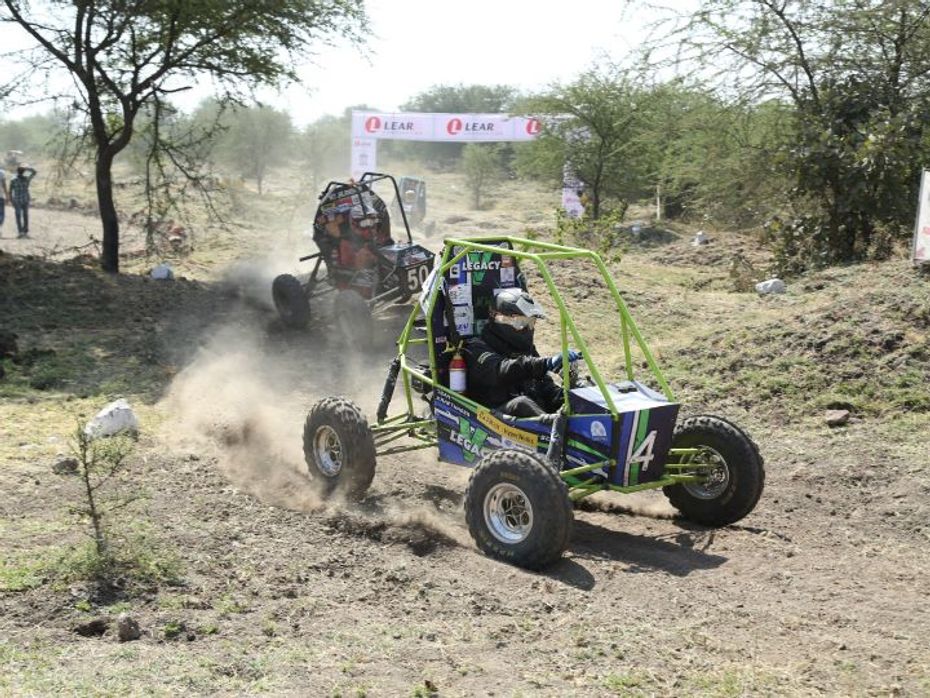
2014 was when I had my first encounter with the SAEINDIA Baja. I was an engineering student back then, in my final year of mechanical engineering, and was nervous as I presented my team's hard work in front of a panel of judges in the virtual round. As luck would have had it, our design was not ready to be put into fabrication. Heartbroken, I promised to return.
And when Mahindra invited Zigwheels to attend the tenth edition of event, held annually near Indore in MP, I jumped at the opportunity of attending it, this time as a journalist.
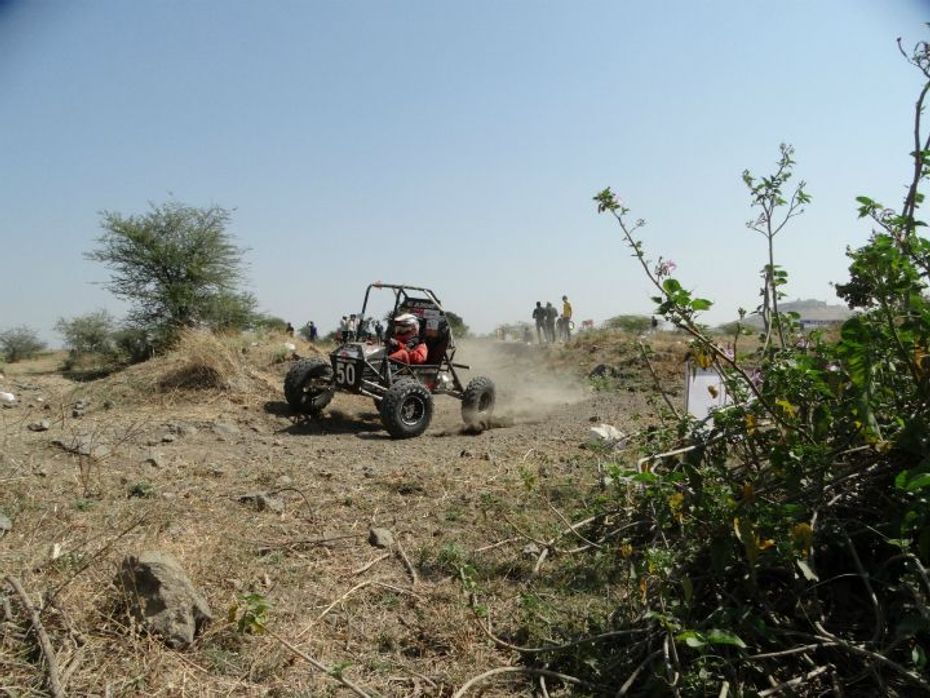
This was the 10th year of the Mahindra-sponsored SAEINDIA BAJA competition and comprised of two disciplines - mBAJA and eBAJA. mBAJA is the regular competition in which buggies built by students use petrol engines, while the eBAJA, now in its third year, has students use an electric powertrain. Given that the cost of the eBAJA buggies was becoming a challenge, Mahindra decided to give a Rs 2 lakh subsidy to the teams qualifying for it this year.
What is the SAEINDIA BAJA?
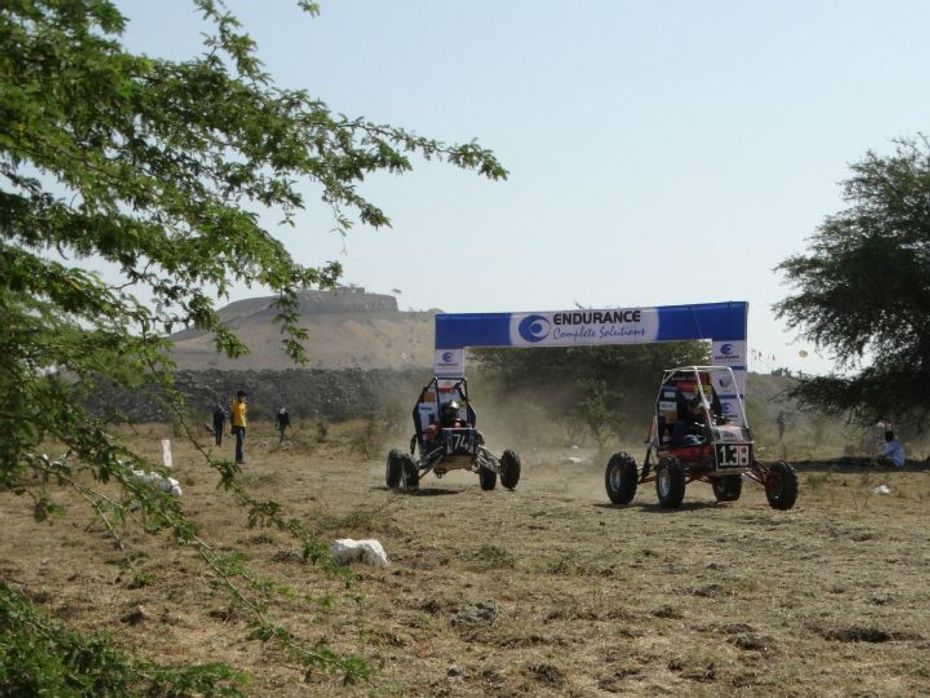
SAEINDIA BAJA is an off-road buggy making competition for engineering students. Students first have to create a virtual 3D model of an off-road vehicle, adhering to a very strict and complex rulebook. Overall dimensions, engine, fuel tank, exhaust and safety regulations are fixed, but what formula students wish to use for the design is totally up to them. Once that is done the design is evaluated by a panel of judges who decide whether or not the model is good enough to be built.

Subject to approval, students have to build the buggies themselves, without taking external help from professional workshops. The cost of building the buggies can even exceed Rs 5 lakh at times, and in a bid to help students learn the importance of marketing, getting sponsorships is mandatory. I know what you are thinking now. Ooh, this is a student event alright. Battling it might be slow and simple, with mere speed breakers as obstacles. Trust me, you couldn't be more wrong. After witnessing the event first hand, I am taken back by the speed and reliability of the buggies, not to mention, the difficulty levels on the test track.
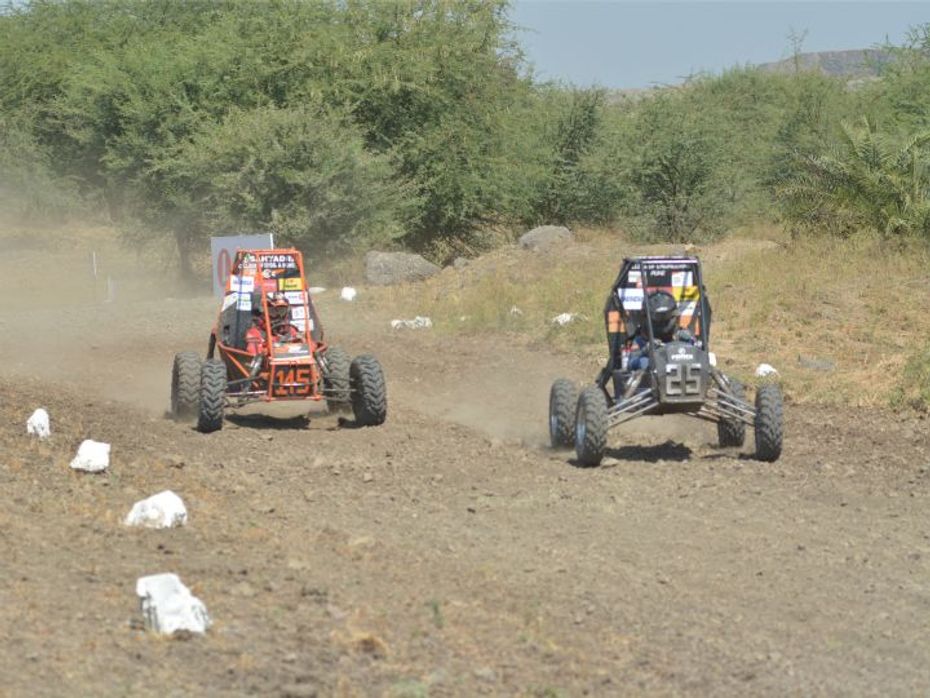
The event is held at the NATRIP facility (National Automotive Testing and R&D Infrastructure Project), a Government of India undertaking for testing for automobiles, at Pithampur, near Indore. While the rest of the facility is still under development, the track used for the SAEINDIA BAJA is an off-road course consisting of fast and slow corners, obstacles, water pits, hill climbs and the like, which together make for an interesting mix. In its tenth edition this year, the SAEINDIA Baja had 415 colleges from across India register for the event, out of which only 185 teams qualified for the finale. Interestingly, this year’s event also saw a team from Dubai compete, a first for the SAEINDIA BAJA. Of the 185, 150 teams competed in the mBAJA and 35 in the eBAJA.
What are the buggies like?
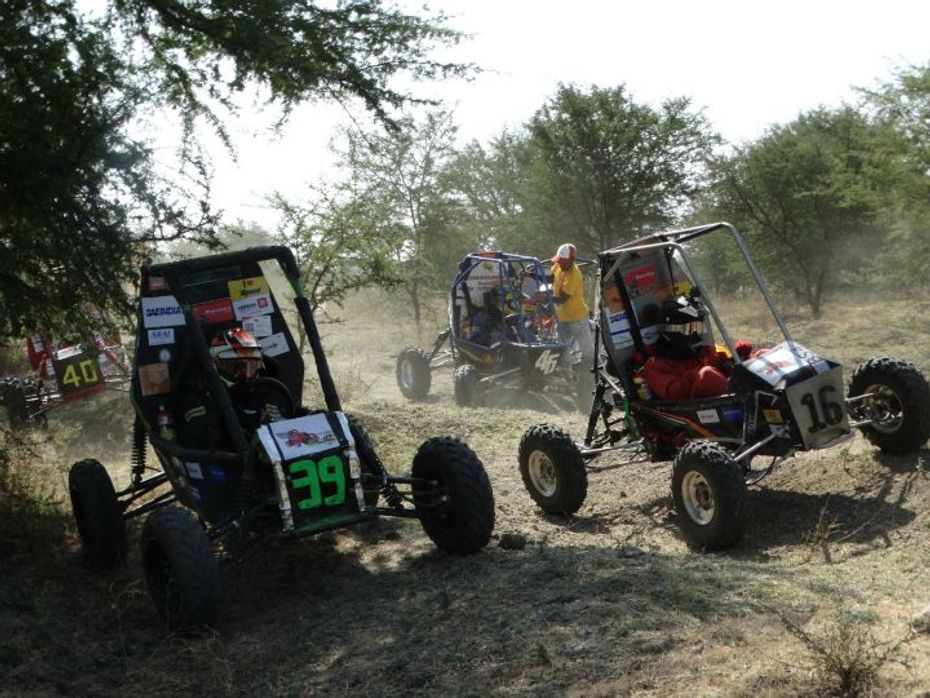
All teams are mandated to use the engine from Briggs & Stratton engine with a 3800rpm limit, and no modifications are allowed to the engine whatsoever. Students are free to employ a transmission of their choice though – manual or automatic, and even set desired gear ratios for optimum performance. On an average, buggies can attain a top speed of 60kmph. The suspension design is free, meaning teams can choose the type of suspension though most stuck to the double A-arm setup with coil-over shock absorbers. This setup makes the buggies extremely capable of tackling off-road terrains.
What are the kinds of tests the buggies undergo?
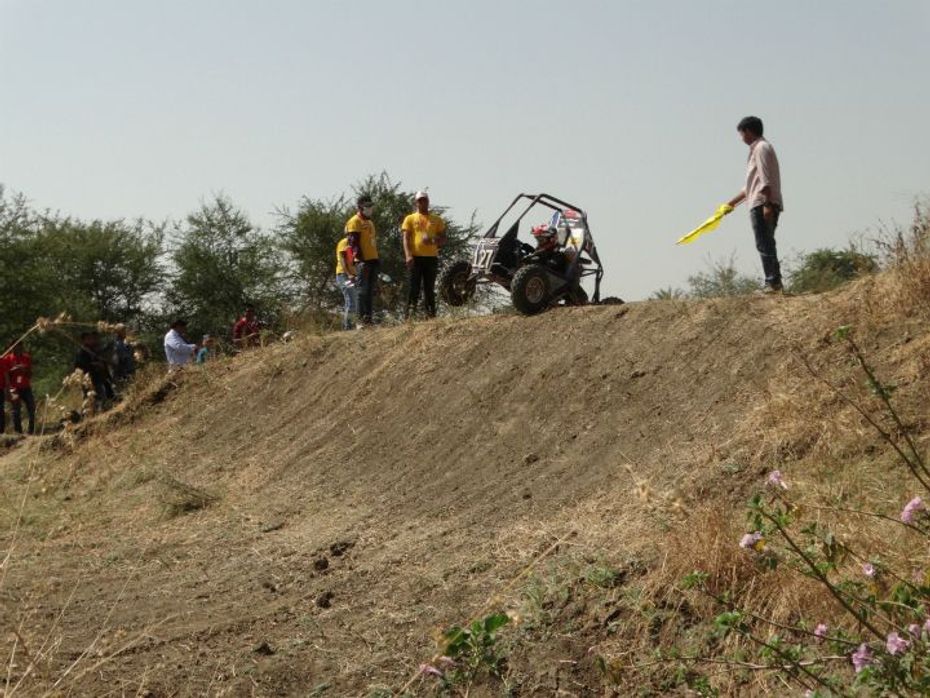
Once the buggies arrive at the track, they undergo critical scrutiny. First of them is a technical evaluation in which the car is closely checked to ensure it complies with all parameters of the rule book. It then has to undergo dynamic tests like acceleration and brake testing to check for proper functioning. Failing any of these results in disqualification.
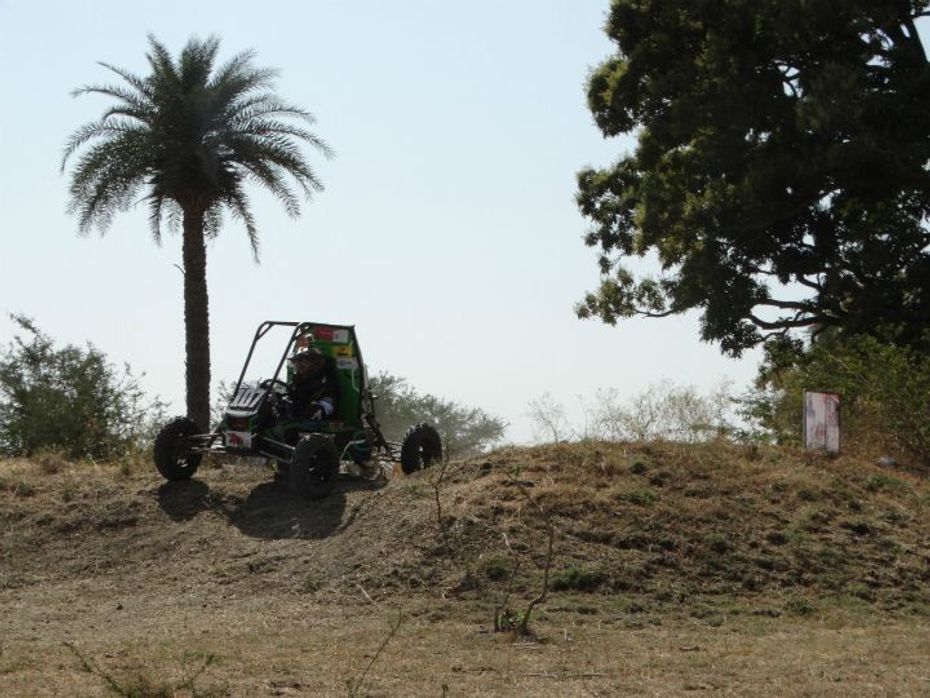
Until last year, the dynamic tests also included a gradient climb on an incline that has been replaced with a more complex log pull. The cars have to pull a heavy log across a predefined section of the track which has some obstacles. This gradient climb was done away with as students had mastered the gradient climb over the past editions and it wasn't difficult anymore.

The buggies passing these tests are eligible for the final endurance race, held on Sunday. Roughly a quarter of the teams having registered originally are able to make it to this race. Each team can score a maximum of 1000 points in the event overall, of which, 400 points can be scored in the endurance race. The race is a four hour run on the 5km long test track, and the team lapping the circuit the highest number of times wins the race, though not necessarily the event, as it may have scored lesser than other teams in tests like presentations and dynamic tests.
The Overall Experience

We were present at the track to witness the endurance race. Grid positions for the race are decided by the dynamic tests held on the previous day, and standing at the starting grid gave me a sense of the immense excitement in the minds of the competing students. Students work for months at an end, burning the midnight oil to perfect their creations, and the sense of achievement was visible on their faces. As soon as the green flag was shown by Dr Pawan Goenka, MD, Mahindra & Mahindra Ltd, team members were cheering their drivers, egging them to go faster and running alongside the track with tools and taking position near the tricky parts of the circuit.
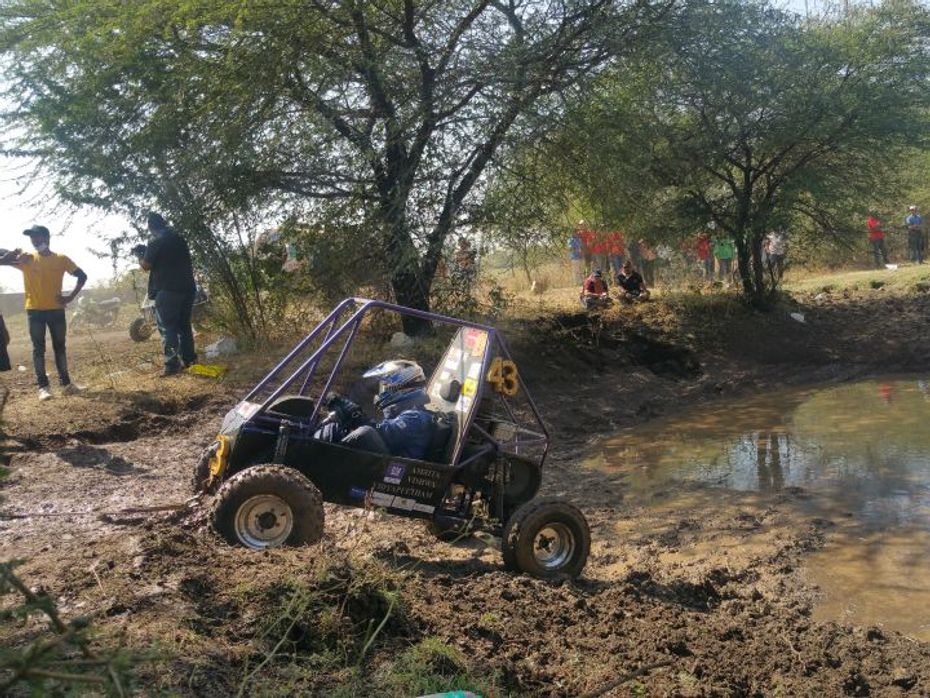
It was a revelation for me to see how well college students had built the buggies – I saw them getting airborne a few times, toppling over and still continuing, going over bushes, through the water pits and still going forward. Drivers have to time pit stops for major repairs, schedule refuelling, and keep on going under the heat of the sun in fireproof gear. I was tired just by walking just around the perimeter of the track but these teams were at it lap after lap, be it the driver or the support crew.

The competitive spirit was apparent on track too, with drivers skilfully avoiding collisions, performing risky overtaking manoeuvres, power slides and jumps to stay ahead of the pack.
At the end of the 5 day event, the College of Engineering, Pune (COEP) claimed top honours, and were declared overall winners of the 2017 SAEINDIA BAJA. Alard College of Engineering, Pune and Dr. BR Ambedkar National Institute of Technology, Jalandhar were declared first and second runners-up respectively. The eBAJA was won by Sinhgad College of Engineering, Pune with just 8 of the 35 competing buggies completing the endurance run.
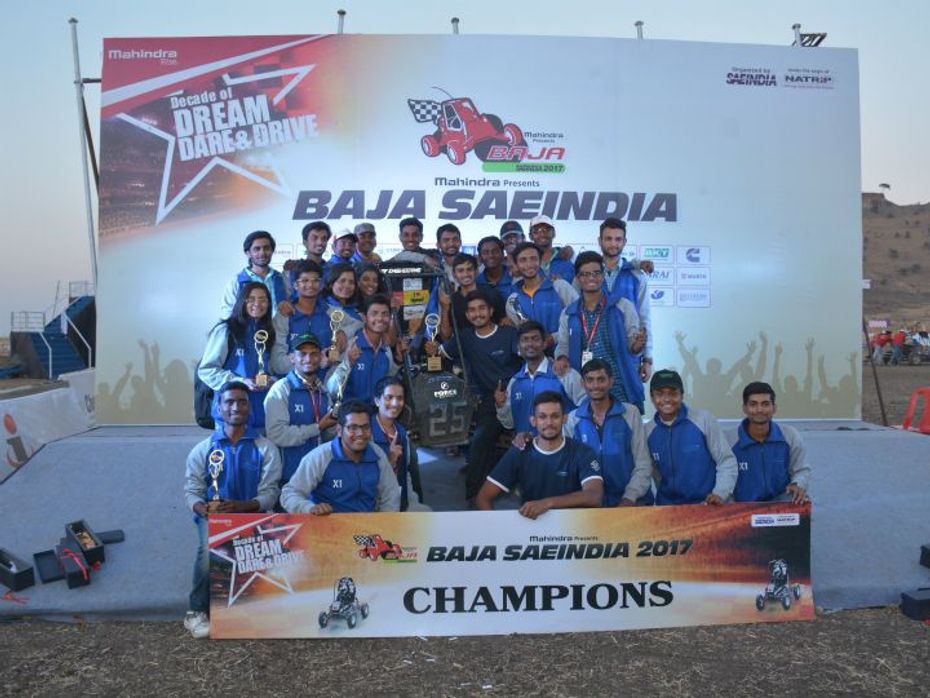
What’s noteworthy is the fact that the quality of the buggies being built is improving with each passing year, despite the track getting more challenging. The sheer stress the buggies are put through over the course of the event bears testimony to the efforts put in by the students and the engineering done by them to put the buggies together. My biggest takeaway though was the realisation that the SAEINDIA BAJA not only teaches students to successfully build off-road vehicles, but also teaches them a thing or two about team spirit, along with helping them realise the importance of aspects like marketing and cost evaluation.
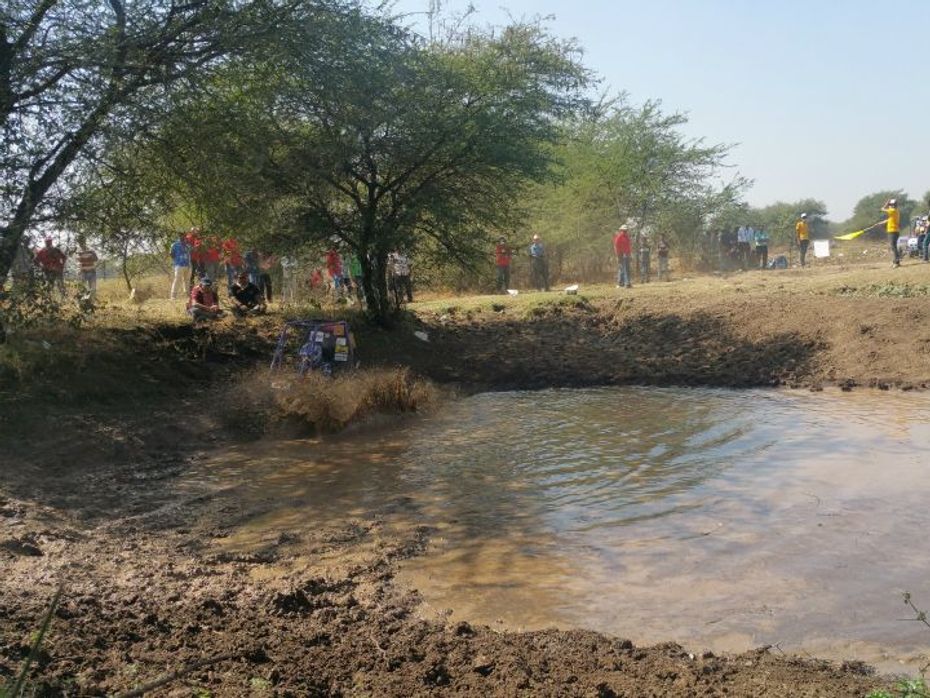
Having witnessed the event first-hand, I now rue not having been able to make a buggy successfully during my college days, though I am glad to see future engineers get prepared better for the cut-throat competition that the automobile industry witnesses today.

Mahindra BE 6e and XEV 9e: Unleashing An Electric Revolution

2024 Toyota Camry Launched In India At Rs 48 Lakh; Now...

Skoda Kylaq: Here’s What You Get With Each Of Its 4 Variants

Mahindra BE 6e Launched At Rs 18.9 Lakh, Gets Modern Styling, Premium...

Mahindra’s Top 5 Big Claims About BE 6e & XEV 9e

Mahindra BE 6e vs Tata Curvv EV: Which Electric SUV Claims The Better...

Mahindra BE 6e: A 360-degree Look At Its Exterior & Interior In 13...

Mahindra BE 6e vs XEV 9e: An In-depth Comparison Of Mahindra’s...

New 2024 Honda Amaze Arrives In India At Rs 8 Lakh
India's largest automotive community
 Toyota Camry
Rs. 48.00 Lakh
Toyota Camry
Rs. 48.00 Lakh
 Honda Amaze
Rs. 7.99 Lakh
Honda Amaze
Rs. 7.99 Lakh
 Audi Q7
Rs. 88.66 Lakh
Audi Q7
Rs. 88.66 Lakh
 Mahindra XEV 9e
Rs. 21.90 Lakh
Mahindra XEV 9e
Rs. 21.90 Lakh
 Mahindra BE 6
Rs. 18.90 Lakh
Mahindra BE 6
Rs. 18.90 Lakh